The project of a medium tank VK 3002 (DB), Germany
VK projects 3002, one of which subsequently allowed to begin rearmament of the army, started at the end of November 1941. By this time, a number of German enterprises had already developed several options for promising medium tanks with certain characteristics, but over time, the further development of these machines was considered impractical. So, from the experience of the first months of the war with the Soviet Union, which had several types of medium and heavy tanks with good protection indicators, it was decided to abandon a number of existing projects and create new ones instead.
It is often mentioned that the Soviet medium tank T-3002 became a direct incentive for the emergence of two VK 34 projects. This combat vehicle had relatively thick armor with rational tilt angles, which provided effective protection against various anti-tank weapons. As a result, the Soviet development interested the German military, which resulted in an order to create a similar tank. November 25 1941 companies Daimler-Benz and MAN received a technical task to develop a new tank. Both projects received the general designation VK 3002. The development of the two firms also had to receive additional letters to determine the creator.
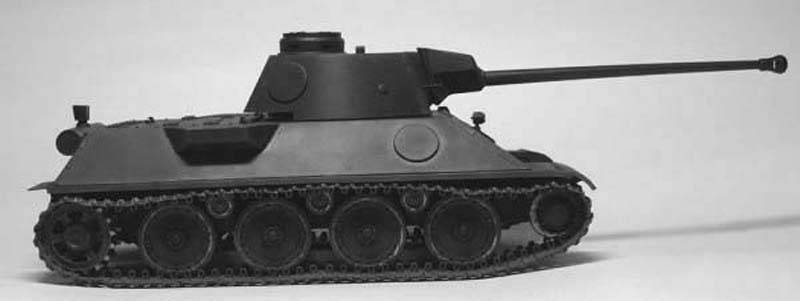
Model of the tank VK 3002 (DB) in the first version. Photo Aviarmor.net
In accordance with the terms of reference, the prospective medium tank should have a combat mass at the level of 30 t and be equipped with armor thickness up to 40 mm. Separately, the installation of armor plates was specified at angles to the vertical. Having an engine power of not more than 700 HP the tank had to move along the highway at speeds up to 55 km / h. To improve off-road mobility, a large-width caterpillar should be used. The main armament was required to use long-barreled tank gun caliber 75 mm.
Design work on the first versions of the promising tank lasted for several months. Daimler-Benz completed the preliminary development of its version of the VK 3002 (DB) tank in February 1942. In their new project, the Daimler-Benz designers used a number of ideas that were not completely characteristic of German tank construction. In addition to rational booking angles, obviously borrowed from Soviet tanks, the new VK 3002 (DB) also had to have a classic layout that was almost never used in German projects.
The new medium tank was supposed to receive an armored hull with a characteristic shape formed by inclined sheets. There was a frontal sheet with a large angle of inclination, in which there was a driver's access hatch and a machine-gun installation. Behind the front sheet, it was necessary to weld inclined sides, forming large fusible niches. Behind the tower on the sides were projected large protruding covers for some units of the power plant. Aft hull sheet was installed with a slope inward. There was a roof, made in the form of a single plane without changes in height. As part of the armor hull it was proposed to use sheets of thickness up to 40 mm.
The layout of the hull was classic, but uncharacteristic for German tanks. In front of the station was located control, behind which there was a fighting compartment. The feed was given under a single engine compartment with all the relevant units.
As the main element of the power plant were considered several different products. Initially, it was proposed to use the Daimler-Benz MB507 diesel engine, which was a modified version of the engine for boats for various purposes. Nevertheless, serious problems could arise with such a power plant, which made it necessary to look for alternatives. Subsequently, such searches led to a certain result. An updated version of the project, which appeared later, received a different engine.
The first version of the tank VK 3002 (DB) received a chassis, clearly talking about trying to rethink the Soviet experience in the light of their own developments. The tank was supposed to receive four double support rollers of large diameter on each side. It was proposed to equip the rollers with spring suspension. Between the rollers, with a significant excess over them, the supporting rollers were to be located. In front of the hull were placed the guide wheels, while the leading were in the stern. Such an unusual for German tanks chassis layout was associated with the rejection of the front placement of the transmission.
For the tank was developed a new tower of complex shape, which provided the required level of protection and had sufficient internal volume. The tower consisted of two straight sheets that formed the forehead and stern, as well as two curved sides. From above, the crew was to defend the roof with a commander's turret at the left side. Especially for the new project was developed armor mask guns of unusual shape. It differed from existing samples by a polygonal section and an enlarged upper part.
The basic one weapons VK 3002 (DB) was supposed to be a gun 7.5 cm KwK 42. This 75 caliber gun with a barrel length 70 caliber was equipped with a muzzle brake, a vertical wedge gate and weighed about 1 tons. Several types of unitary shots with projectiles of various purposes were suggested for use with this gun. Depending on the type of projectile, the initial velocity reached 1120 m / s. Using the Pz.Gr.40 / 42 sub-caliber armor-piercing projectile at a distance of 1 km, it was possible to penetrate about 150 mm of homogeneous armor.
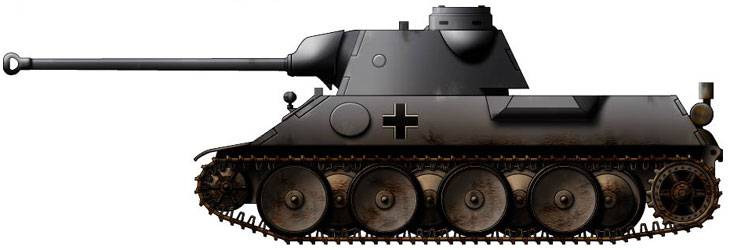
Possible appearance of a serial armored car. Figure Wardrawings.be
Additional armament of the tank was to consist of two MG 34 machine guns of 7,92 caliber mm. One of them was suggested to be mounted in one installation with an instrument, the second - in the embrasure of the frontal sheet. A machine gun was supposed to be located on a rocking installation, covered with a small armor detail. In the stowed position, this detail closed the window in the front plate, and the machine gun was completely inside the tank. In the combat position of the machine gun turned on the mounts, raising up the barrel and armor cap of the front sheet.
The crew should have included five people. The driver and radio operator were located in the front office, in the front of the hull. It was suggested to observe the situation with the help of the hatch and front wall embrasure. Landing in the car should be made through round hatches in front of the sides. The use of hatches in the roof was not possible due to the specific location of the tower, the front sheet of which was located at a minimum distance from the front of the hull.
The jobs of the three other tankers were located in the fighting compartment, inside the tower. At the left side of each other were the gunner and the commander. On the right was the gunner's workplace. Most of the free volume inside the fighting compartment was given to the placement of ammunition. The turret received a manhole on the commander's turret, as well as similar devices on the stern of the sides.
Due to the use of new ideas and technical solutions, the prospective medium tank was not distinguished by large dimensions. The length of the vehicle reached 6 m, width - 3,2 m, height - 2,69 m. The combat weight, depending on some factors, was to be at the level of 30-34 t. With the help of the 650-strong engine, the tank could accelerate to 55-56 km / h Cruising, according to calculations, was 195 km.
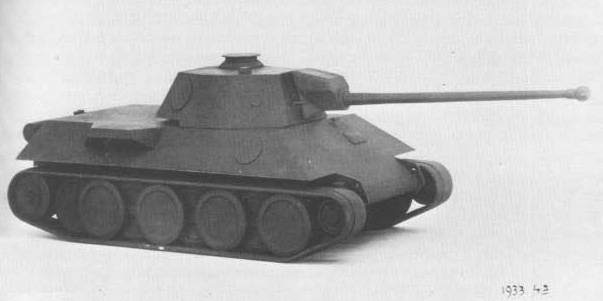
Layout of the second version of the tank. Photo Aviarmor.net
The first version of the medium tank VK 3002 (DB) project was completed in February 1942. A set of necessary documents was prepared, and in addition, a large-scale model was assembled, demonstrating the overall appearance of the prospective armored vehicle. All this was presented to the customer. The command studied two variants of the medium tank and made conclusions. At the same time, as far as we know, the leaders of Nazi Germany disagreed.
The country's top leadership in the person of Adolf Hitler favored the project of the company Daimler-Benz. Probably, this decision was affected by the similarity of VK 3002 (DB) and the Soviet T-34, as well as the success and potential of the latter. Using his position, the Fuhrer pushed through the introduction of a new tank in the current plans for the construction of armored vehicles. In the foreseeable future, the military industry was to build two hundred new medium tanks. In the future, their production could be continued. Thus, VK 3002 (DB) at a certain stage had every chance of becoming the main medium tank of the German army.
The Wehrmacht Armaments Directorate, in turn, preferred the MAN project. The medium tank VK 3002 (M), unlike its competitor, looked more successful and promising. Experts felt that such a machine has much greater potential in terms of modernization, and also more fully corresponds to the technical task. In addition, this tank did not look so much like a copy of Soviet armored vehicles.
In accordance with the existing regulations, the company Daimler-Benz began to build a prototype of its new tank. However, the completion of the prototype assembly was in doubt. Shortly after making an ambiguous decision on the serial production of the not the best version of a medium tank, the military gathered a special commission, which was to finally determine the results of the competition.
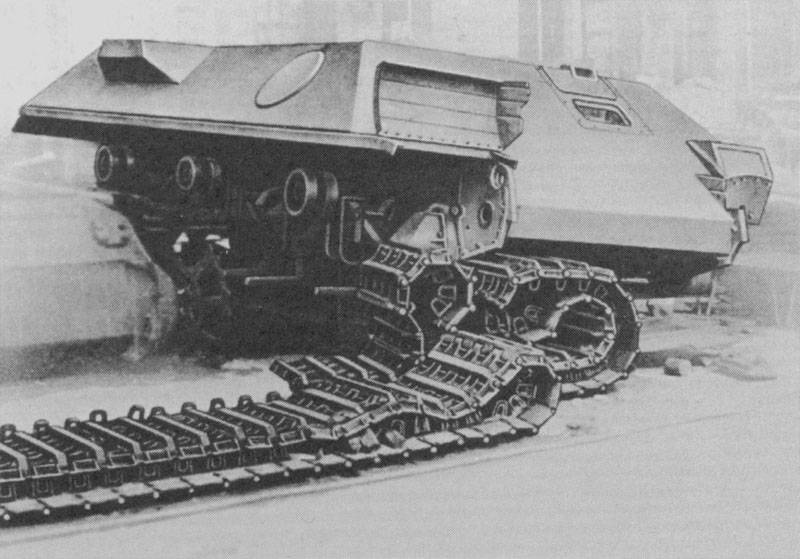
Unfinished prototype VK 3002 (DB) of the first version. Photo Aviarmor.net
13 May Commission issued a final decision. The project of the company Daimler-Benz was declared unpromising. Due to the significant similarity with the Soviet T-34 and due to the lag in some characteristics, this car was considered unsuitable for serial construction and mass operation in the army. The VK project 3002 (M), in turn, received higher marks and was recommended for further development with the subsequent start of mass production.
In connection with the decision of the commission, the company-developer VK 3002 (DB) had to stop building the first prototype. By this time, an armor hull was made, on which some elements of the chassis and internal equipment had been installed. Rollers, tracks, turret, weapons, etc. an experienced tank did not have time to get.
According to the company "Daimler-Benz", the decision of the army commission was not fair. Nevertheless, the developers have recognized that the project in its current form needs to be improved. For this reason, by the end of May, an updated version of the VK 3002 medium tank (DB) was developed, which differed from the original by a number of features. By changing the composition of the installed units and processing part of the systems, it was planned to improve the performance and re-interest the customer.
First of all, it was decided to abandon the diesel engine. Instead, it was proposed to install the Maybach HL 210 P45 hp carburetor in the aft hull compartment. The chassis was reworked, resulting in eight large-diameter support rollers each with an individual torsion bar, staggered. The location of the guide and drive wheels remained the same, and the supporting rollers were removed. The hull structure has been redesigned to meet the updated requirements. Thus, the thickness of the frontal sheet increased to 650 mm. Tower, weapons, etc. remained unchanged. At the same time, some systems were refined for various purposes.
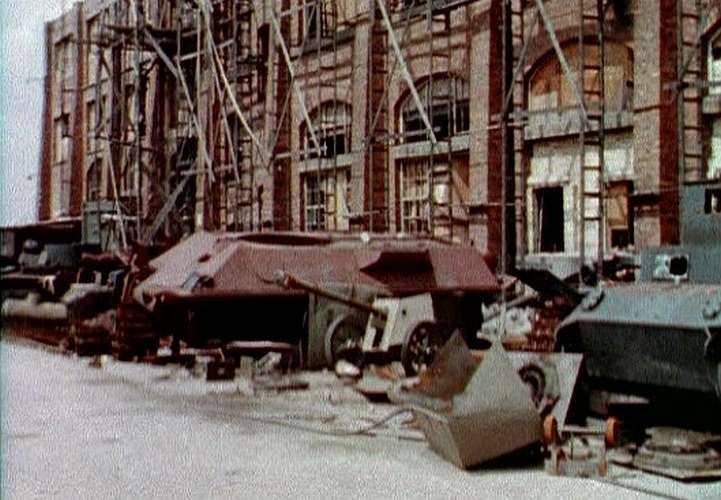
Unfinished armored vehicles at the factory Daimler-Benz. In the center - VK VK 3002 (DB). Photo Henk.fox3000.com
Calculations showed that the updated version of the VK 3002 (DB) tank differs from the base one in higher driving characteristics, and also has other advantages, primarily of a production and operational nature. Combat qualities were to remain at the same level, which was associated with the preservation of the 75-mm cannon and two rifle-caliber machine guns.
Daimler-Benz once again prepared the documentation and built a model of the new tank, which was presented to the customer for a second review. The command once again got acquainted with the project of a promising tank and studied this proposal, defining its prospects. The decision remains the same. Further development was to get VK project 3002 (M) from the company MAN, and VK 3002 (DB) should be stopped. Daimler-Benz designers were forced to move to work on other promising projects.
In accordance with the first orders of the management, the company Daimler-Benz started the construction of the first experimental tank VK 3002 (DB). By May 1942, when a special commission chose a different project, a building with an incomplete assembly was built. In connection with the modifications of the project, the construction of the prototype was suspended. The final closure of the project led to the cancellation of all further work. The prototype of the medium tank remained in the form of an unpainted body with several additional units. According to various sources, the unfinished tank chassis remained at the Daimler-Benz factory, where it was kept until the very end of the war. Only in 1945, unwanted units were sent for cutting.
With the decision from 13 in May 1942, MAN was entrusted with the further development of the existing VK project 3002 (M). Changes in various design features and various modifications of this project eventually led to the appearance of the serial tank Pz.Kpfw.V Panther. Unlike its unfortunate competitor, the armored vehicle from MAN successfully passed the tests and was put into service, eventually becoming one of the main tanks in Germany.
Based on:
http://aviarmor.net/
http://ww2history.ru/
http://achtungpanzer.com/
http://armor.kiev.ua/
Chamberlain P., Doyle H. Complete reference book of German tanks and self-propelled guns of the Second World War. - M .: AST: Astrel, 2008.
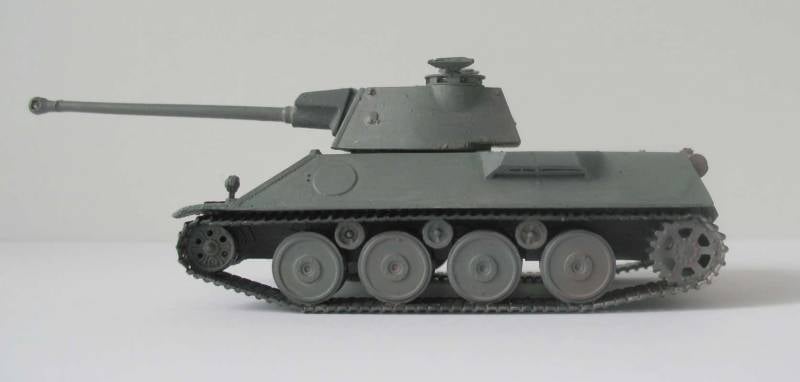
Information